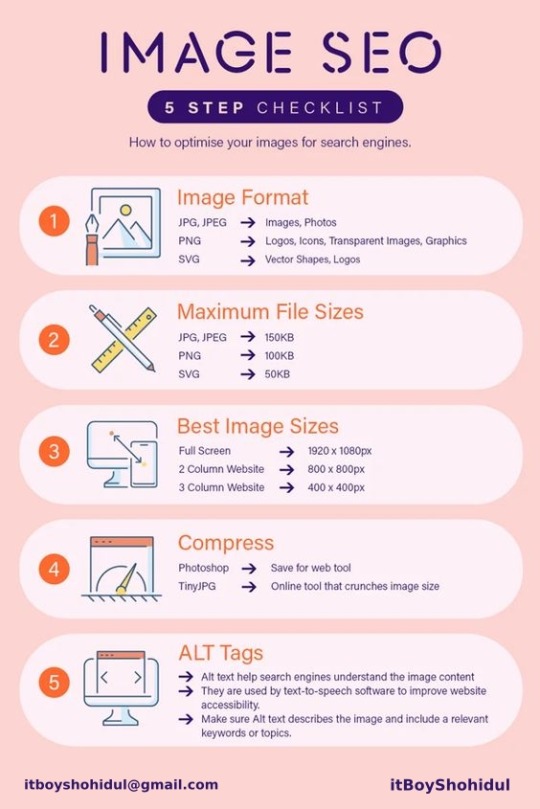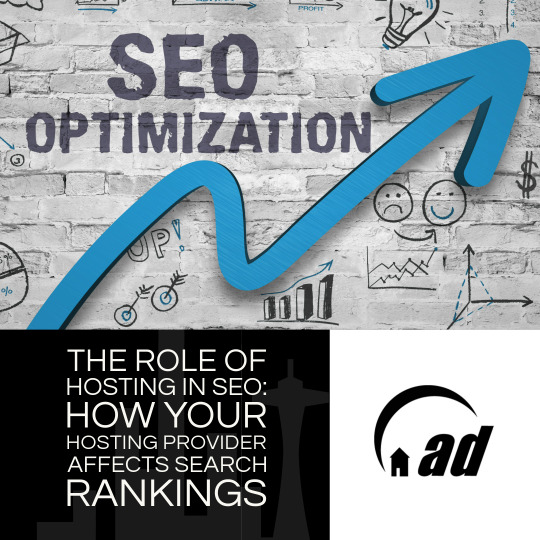#search ranking tips
Explore tagged Tumblr posts
Text
How to Optimize Your Website for Top Search Rankings

Improve your online presence with these expert tips.
Your website is often the first impression potential customers will have of your business. Make sure it’s a good one with these proven strategies for optimizing your site’s search engine ranking and enhancing your online reputation.
Have you implemented any of these tips already? Share your experience in the comments!
For professional design and development services, vist The Ant Firm
#Infographic#infographic design#SEO tips and tricks#website optimization tips#optimize website#search ranking tips#website ranking tips#Web Design Toronto#Toronto Website Development#Toronto UX/UI Design#E-commerce Website Toronto#Toronto Branding Agency#Toronto WordPress Development#Toronto Digital Marketing#Toronto Logo Design#Toronto Creative Agency#The Ant Firm#Web Agency Canada#theantfirm
1 note
·
View note
Text
Book Publishing Resources
Well, since a few people said they were interested and/or that posting about it on here occasionally was a decent idea, here we go!
I'm MC Calvi, a freelance editor specializing in self-help, psychology, spirituality, paganism, workbooks, and LGBTQ books.
You can find out more about me at my website, where I also offer free twenty-minute book/publishing consultations, in addition to regular editing services.
I am also now offering some pay-what-you-can resources on my website and on Gumroad. I'm committed to offering pay-what-you-can resources because the odds are already so stacked against marginalized authors, and publishing shouldn't be pay to win.
I have two new booklets I'm actually super happy with! They both draw on my eight years of experience in the publishing industry to give authors a leg up.
And now, back to our regularly scheduled programming as I hit "publish" on another good news post!
#Also if you're not interested but still want to help/support me#it would actually be super helpful if you reblogged this#because having my website link in more places will help boost my ranking in search engines#I promise not to post about this often#like we're talking less than once a month#I'm here to spread good news! not to spam my stuff!#and everything I do post will be tagged with#my editing#in case you want to filter#book editing#publishing#publishing tips#book publishing#indie author#self publishing#not news
262 notes
·
View notes
Text
The idea of having marketplace websites for local businesses is booming. Many Entrepreneurs started a website marketplace business offering small businesses upload their products for a certain fee they charge every month. But this is not the best option for all businesses. If you had your business for more than 3-4 years, then setting up your own website would be the best deal for you.
#business consultancy#business consultant#business consulting#business consultation#business essentials#business owners#build a website#small business website design#website development#search engine optimization tips#search engine ranking#search engine#search engine optimization
5 notes
·
View notes
Text
What is robots.txt and what is it used for?
Robots.txt is a text file that website owners create to instruct web robots (also known as web crawlers or spiders) how to crawl pages on their website. It is a part of the Robots Exclusion Protocol (REP), which is a standard used by websites to communicate with web crawlers.
The robots.txt file typically resides in the root directory of a website and contains directives that specify which parts of the website should not be accessed by web crawlers. These directives can include instructions to allow or disallow crawling of specific directories, pages, or types of content.
Webmasters use robots.txt for various purposes, including:
Controlling Access: Website owners can use robots.txt to control which parts of their site are accessible to search engine crawlers. For example, they may want to prevent crawlers from indexing certain pages or directories that contain sensitive information or duplicate content.
Crawl Efficiency: By specifying which pages or directories should not be crawled, webmasters can help search engines focus their crawling efforts on the most important and relevant content on the site. This can improve crawl efficiency and ensure that search engines index the most valuable content.
Preserving Bandwidth: Crawlers consume server resources and bandwidth when accessing a website. By restricting access to certain parts of the site, webmasters can reduce the load on their servers and conserve bandwidth.
Privacy: Robots.txt can be used to prevent search engines from indexing pages that contain private or confidential information that should not be made publicly accessible.
It's important to note that while robots.txt can effectively instruct compliant web crawlers, it does not serve as a security measure. Malicious bots or those that do not adhere to the Robots Exclusion Protocol may still access content prohibited by the robots.txt file. Therefore, sensitive or confidential information should not solely rely on robots.txt for protection.
Click here for best technical SEO service
#technicalseo#seo#seo services#robots.txt#404error#digital marketing#keyword research#keyword ranking#seo tips#search engine marketing#404 error#googleadsense#rohan
9 notes
·
View notes
Text
SEO Dominance: The Key to Online Success
1. Introduction In today’s digital age, having a strong online presence is crucial for businesses of all sizes. The internet has become a vast marketplace, and businesses need to ensure that they are easily discoverable by their target audience. Search Engine Optimization, or SEO, plays a pivotal role in achieving this goal. In this comprehensive article, we will delve deep into the world of…

View On WordPress
#Backlinking#Content Marketing#Digital Marketing#Google Ranking#Keyword Optimization#Link Building#Mobile SEO#Off-Page SEO#On-Page SEO#Online Marketing#Organic Search#Search Engine Optimization#SEO Analytics#SEO Best Practices#SEO Ranking#SEO Strategies#SEO Techniques#SEO Tips#SEO Tools#SEO Trends#SERP (Search Engine Results Page)#User Experience (UX)#Voice Search Optimization.#Website Optimization#Website Traffic
10 notes
·
View notes
Text

Boost your #WebPerformance with effective #ImageOptimization! Maximize #SEO impact by compressing images, using descriptive filenames, and adding alt text. Optimal image sizes enhance page load speed, improving user experience and #SearchRankings. Explore more #SEOTips on Images and elevate your #OnlinePresence! Ultimately success on #DigitalMarketing
3 notes
·
View notes
Text
New Business Tip From our Blog!

We have some exciting news to share with you! Our latest blog post is now live and it's all about how you can improve your website's search rankings. Our guest writer, Paul Wheeler, has shared some valuable insights that you won't want to miss. So, get ready to give your website an SEO boost and climb up the ranks! Don't forget to check it out and happy reading!
4 notes
·
View notes
Text
E-commerce SEO Strategies Unveiled: Boosting Sales and Visibility

In the ever-evolving landscape of e-commerce, staying ahead of the competition requires not only a compelling product but also a well-optimized online presence. In this comprehensive guide, we will delve into the world of E-commerce SEO optimization. No buzzwords, just actionable insights to enhance your online store's visibility and boost sales. Let's get started
Understanding the Basics
To lay a solid foundation, let's start with the basics. E-commerce SEO optimization involves a series of on-page and off-page strategies aimed at improving your website's ranking on search engine results pages (SERPs). This optimization is pivotal for attracting high-quality organic traffic, increasing sales, and staying competitive in the digital marketplace.
Keyword Research
The cornerstone of any successful SEO campaign is thorough keyword research. Begin by compiling a list of relevant keywords that reflect your products, services, and industry. In addition to your primary keywords, consider long-tail keywords, as they often have less competition and can yield highly targeted traffic. For instance, if you're a digital marketing agency in Seattle, keywords like "digital marketing services in Seattle" and "Seattle SEO company" are goldmines.
On-Page Optimization
High-Quality Content: Your website's content should not only be unique but also provide value to your audience. Craft product descriptions, blog posts, and landing pages that resonate with your target audience. Incorporate the primary and long-tail keywords naturally within the content while maintaining readability and a professional writing style.
Page Titles and Meta Descriptions: Ensure that each page has a unique and descriptive title tag and meta description. These elements should include relevant keywords and provide a concise summary of the page's content. This encourages users to click through to your website from the search results.
Header Tags: Use header tags (H1, H2, H3, etc.) to structure your content. This not only improves readability but also helps search engines understand the hierarchy of information on your pages.
User Experience (UX) Matters
Google values user experience, so make sure your website is user-friendly. Optimize for mobile devices, improve page load times, and ensure intuitive navigation. A seamless UX not only pleases visitors but also satisfies search engine algorithms.
Backlink Building
Off-page SEO is as crucial as on-page optimization. Seek high-quality backlinks from reputable websites in your industry. Guest posting, influencer collaborations, and participating in industry forums can all help in this regard.
Monitoring and Analytics
Track your SEO efforts using tools like Google Analytics and Google Search Console. Regularly review your website's performance, make necessary adjustments, and stay updated on SEO trends and algorithm changes.
Conclusion:
In the ever-competitive world of e-commerce, mastering SEO optimization is your key to success. By adhering to these strategies and tips, you can enhance your website's visibility, drive organic traffic, and ultimately boost your sales. If you're seeking expert assistance, consider partnering with AE Tech Design Agency, your trusted SEO company in Seattle. Contact us today to explore how our digital marketing services can elevate your online presence and drive meaningful results.
Remember, the world of SEO is constantly evolving, so staying informed and adapting your strategies accordingly is essential for long-term success.
#E-commerce SEO#SEO Optimization#E-commerce Strategies#SEO Tips#Organic Traffic#Search Engine Rankings#Keyword Research#On-Page SEO#Off-Page SEO#User Experience (UX)#Backlink Building#Local SEO#Google Analytics#Digital Marketing#SEO Trends#SEO Algorithm#Online Visibility#Website Performance#SEO Company#Seattle Digital Marketing
6 notes
·
View notes
Text
#SEO#Digital Marketing#Website Traffic#Online Growth#SEO Tips#Search Engine Optimization#Rank vs Growth#Visitor Engagement#Content Strategy#SEO Bangla
0 notes
Text
All Type SEO
All Type SEO is your go-to resource for mastering search engine optimization. Whether you're a beginner or an experienced marketer, we provide expert insights, tips, and strategies to help improve your website's visibility, increase traffic, and drive results. Explore in-depth guides, SEO tools, and the latest industry trends to boost your online presence and achieve higher rankings on search engines.
web: https://alltypeseo.blogspot.com/
#All Type SEO is your go-to resource for mastering search engine optimization. Whether you're a beginner or an experienced marketer#we provide expert insights#tips#and strategies to help improve your website's visibility#increase traffic#and drive results. Explore in-depth guides#SEO tools#and the latest industry trends to boost your online presence and achieve higher rankings on search engines.
0 notes
Text
#Houston SEO Services#Houston SEO Company#Local SEO Houston#SEO Audit Services#Technical SEO Experts#Digital Marketing Houston#Search Engine Optimization#SEO for Small Business#Google Ranking Tips#Website Optimization Houston#Local Business Marketing#SEO Company Near Me#Organic Traffic Growth#On-Page SEO#Mobile SEO Optimization#Houston Marketing Agency#SEO Blog#Online Visibility Strategies#SEO Best Practices#Website Performance Audit
0 notes
Text
वेबसाइट को गूगल में कैसे रैंक करवाएं: एक व्यावहारिक गाइड
How to Rank Website in Google: आज के डिजिटल युग में अपनी वेबसाइट को गूगल के सर्च रिजल्ट्स में ऊपर लाना हर वेबसाइट मालिक का सपना होता है। गूगल पर अच्छी रैंकिंग न सिर्फ आपके ट्रैफिक को बढ़ाती है, बल्कि आपके बिजनेस या ब्लॉग की विश्वसनीयता भी स्थापित करती है। लेकिन यह कोई जादू नहीं है – इसके लिए सही रणनीति और मेहनत की जरूरत होती है। इस लेख में हम आपको बताएंगे कि अपनी वेबसाइट को गूगल में कैसे रैंक…
#boost website ranking on Google#Google search ranking strategies#Google SEO tips#How to rank a website on Google#improve Google ranking#increase website traffic Google#optimize website for Google#rank higher on Google#SEO for Google ranking#website ranking guide
0 notes
Text
🚀 Want to rank higher on Google? Optimize your heading tags the right way!
Google loves a clear content structure, and so do your readers! Properly using H1, H2, and H3 tags improves search engine visibility, boosts organic rankings, and enhances user experience.
💡 How to Optimize Heading Tags for SEO? 1️⃣ Open your website page or blog where you want to optimize headings. 2️⃣ Click "Edit with Elementor" and wait for the editor to load. 3️⃣ Select your main heading (H1) → Check the HTML tag in the "Edit Heading" box → Ensure it's set to H1 (there should be only one per page). 4️⃣ For subheadings, repeat the process: ✅ Use H2 tags for key sections. ✅ Apply H3 tags for sub-sections under H2. 5️⃣ Ensure your headings contain relevant keywords but remain natural and reader-friendly.
📌 Why is Heading Structure Important for SEO? 🔹 Helps search engines understand content hierarchy 📊 🔹 Improves readability and user engagement 🔍 🔹 Increases chances of ranking for featured snippets ✨ 🔹 Makes content more accessible for screen readers ✅
A well-structured page = Better SEO, Higher Rankings & Improved User Experience! 🚀
🔗 Read the full blog "How to optimize heading tags" here" https://digitaldeeptech.com/how-to-use-heading-tags-effectively-for-seo/
#SEO#Optimize Headings#Heading Tags#H1 H2 H3#OnPage SEO#dswebrank#Search Engine Optimization#Content Hierarchy#Google Ranking#SEO Tips#Elementor#Digital Marketing#Deepak Sharma#SEO Expert
0 notes
Text
How to Rank Videos Fast in 2025

Optimizing your YouTube video title for SEO is crucial to ranking higher in search results and increasing clicks. Here’s how to do it effectively:
🔥 1. Use Primary Keywords at the Beginning
Include your main keyword within the first few words of your title.
Example: Instead of "How to Improve SEO for Your YouTube Videos", use:
"YouTube SEO Tips: How to Rank Videos Fast in 2025"
🎯 2. Keep It Concise (50-60 Characters)
YouTube cuts off long titles in search results.
Stick to 5-8 words while making it compelling.
📢 3. Make It Click-Worthy & Engaging
Use power words like "Ultimate," "Best," "Proven," "Step-by-Step," "Fast," "Easy" to boost CTR.
Example: "🔥 Best YouTube SEO Strategies for 2024 – Get More Views!"
🔍 4. Add Numbers or Brackets (Boosts Clicks!)
Numbers make titles stand out: "7 YouTube SEO Tips to Rank #1"
Brackets add clarity: "YouTube SEO [Beginners Guide]"
🚀 5. Create a Sense of Urgency or Curiosity
Use words like "Don't Miss," "Must-Know," "Secret," "New Update"
Example: "STOP Doing This on YouTube! SEO Mistakes to Avoid"
🔄 6. Test & Optimize
Run A/B tests on different titles (use TubeBuddy’s Title Analyzer).
Check YouTube Analytics to see which titles drive more clicks.
✅ Example of a Perfect SEO Title:
📌 "YouTube SEO in 2024: 7 Proven Strategies to Rank #1"
Want help crafting a title for your next video? Drop your topic, and I'll optimize it for you! 🚀
#Optimize video title#Video SEO#SEO for videos#Video title optimization#YouTube SEO#Improve video ranking#SEO tips for videos#SEO strategies#Boost video visibility#Search engine optimization
1 note
·
View note
Text
#SEO Services#Social Media Marketing#Digital Marketing Strategy#Search Engine Optimization#Social Media Advertising#Online Branding#Content Marketing#Business Growth Strategies#Local SEO Services#Website Traffic Boost#Google Ranking Tips#Facebook & Instagram Marketing#Lead Generation#Influencer Marketing#PPC Advertising
0 notes
Text
Why Some Websites' Structured Data Cannot Be Detected by Google Rich Results?
Table of Contents Introduction Understanding Structured Data How Google Rich Results Work Common Issues with Structured Data Detection How to Fix Structured Data Errors AI Overview: Enhancing Structured Data with AI Featured Snippets & AEO Optimization GEO Targeting for Local SEO Impact FAQs About Structured Data and Google Rich Results People Also Ask (PAA) People Also Search…
#AI in SEO#digital marketing trends#digital-marketing#Featured Snippets#Google Rich Results#Google search visibility#Google structured data guidelines#Googlebot#JSON-LD errors#keyword-research#local SEO optimization#Marketing#organic-traffic#rich results test#rich snippets#schema markup#schema validation#search algorithm updates#Search Engine Optimization#seo#SEO audit#SEO expert tips#SEO optimization#SEO Ranking Factors#structured data issues#structured data troubleshooting#technical SEO#website indexing#website performance#website schema errors
0 notes